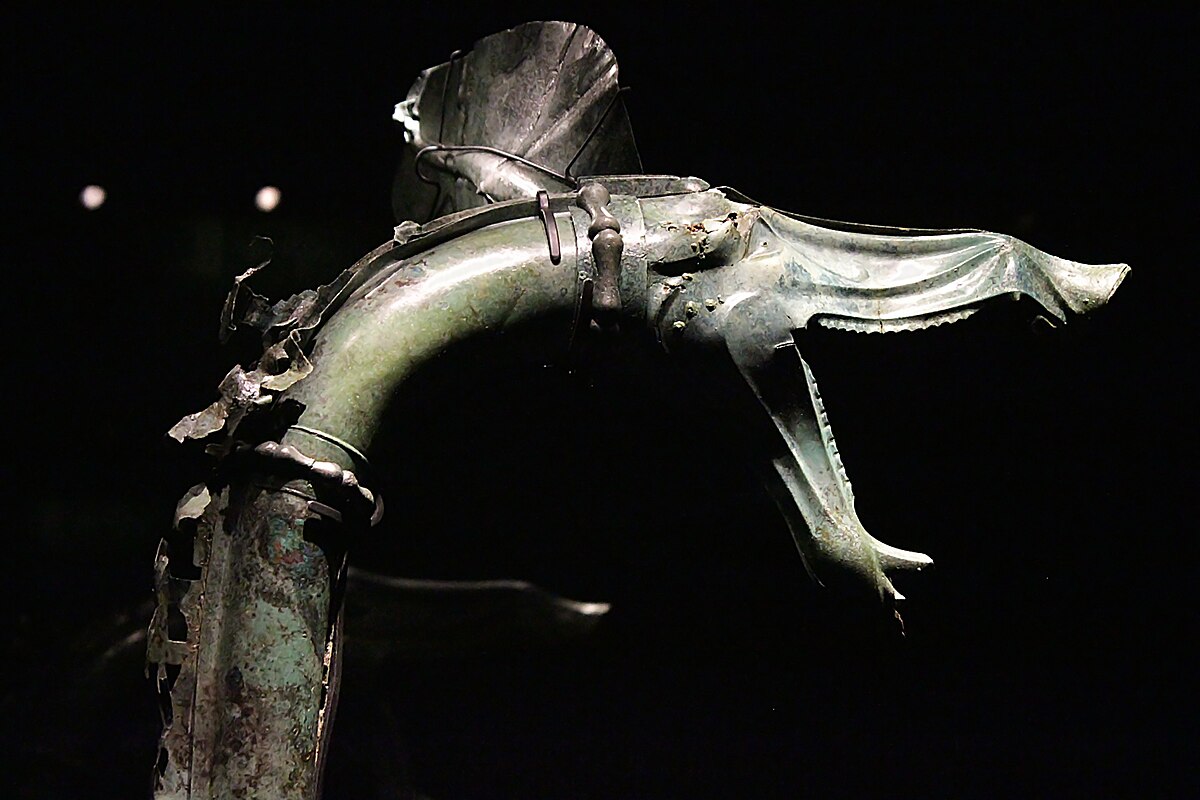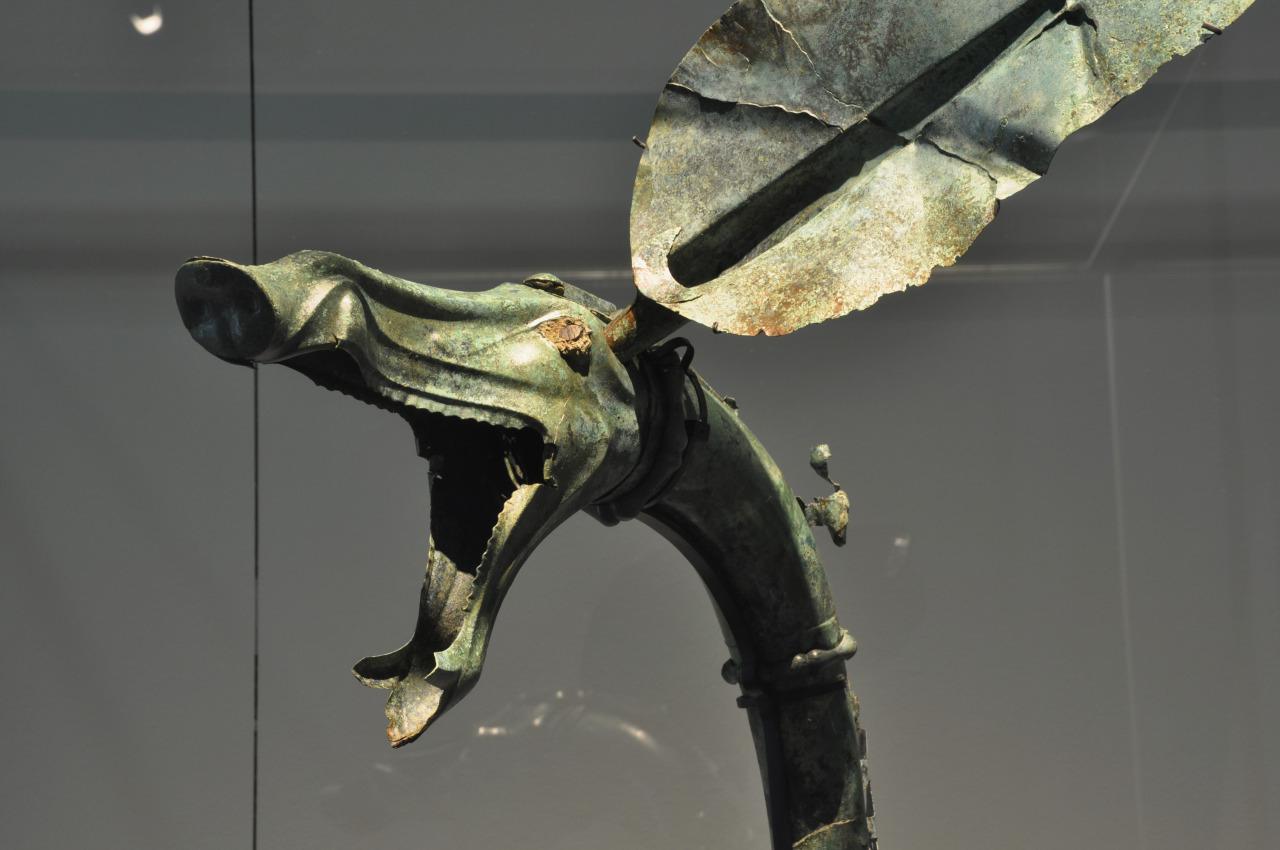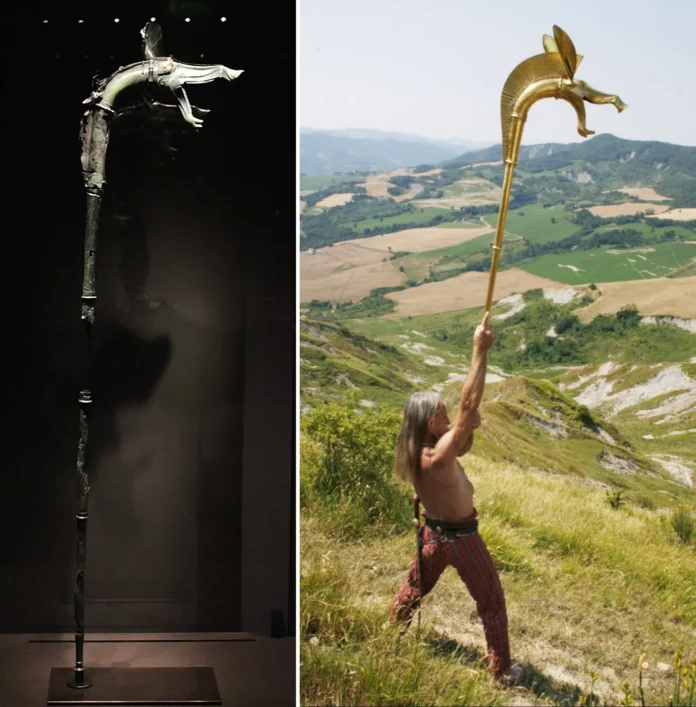In the realm of ancient Celtic history, few artifacts have captured the imagination like the carnyx – a towering, vertically-held trumpet used by the Gauls and other Celtic peoples for ceremonial and military purposes. The sheer power and symbolism of this instrument have long been the stuff of legend, with its haunting sound evoking both the might of Gaul and the tumult of war.
So when archaeologists excavating the Gallic and Gallo-Roman sanctuary of Tintignac in southern France uncovered a trove of metal artifacts in 2004, including the remains of not just one, but seven carnyces, it was a discovery that sent shockwaves through the academic world. Among the hoard of deliberately destroyed and ritually buried objects, which included weapons, helmets, and other symbolic items, the carnyx fragments stood out as a truly remarkable find.
The Tintignac Discovery

The Tintignac excavation was remarkable not just for the size of the discovery – over 500 artifacts packed into a pit just over four feet square and one foot deep – but for the unique and well-preserved nature of some of the items. One of the bronze helmets, for example, featured a design never seen before or since: a gracefully curved swan’s neck forming a frontal horn that bent back to a tail-shaped neck guard.
But the true highlight of the find was the seven carnyces, which represented the largest single collection of these impressive instruments ever unearthed. Prior to this, the remains of only five actual carnyces had been discovered, the most complete being the Deskford carnyx found in Scotland in 1816 – and that was just a stylized boar’s head, not the full instrument.
Reconstructing the Carnyx

A careful examination of the Tintignac fragments revealed an even greater treasure: 40 of the pieces belonged to a single carnyx, topped with the stylized head of a boar with powerful canine tusks and massive ears. Archaeologists were then able to piece the fragments together and reconstruct the first complete carnyx ever found. Standing nearly six feet tall, it is an immensely impressive and imposing instrument.
The complete carnyx has been exhibited in several museums in recent years, often displayed alongside the swan helmet and other artifacts from the Tintignac hoard. But the discovery’s significance extends far beyond its display value. The Tintignac carnyx has provided researchers with an unprecedented opportunity to study the acoustics and playability of these ancient Celtic horns.
Acoustic Research and Replicas

Archaeologists, instrument makers, and acoustics experts have been collaborating to create exact replicas of the Tintignac carnyx, with the goal of understanding how these instruments were played and the unique sonic qualities they possessed. Previous replicas had been based only on the fragmentary remains of other carnyces, but the Tintignac find allowed researchers to examine the full length and structure of the instrument.
Their findings have been fascinating. The carnyx, it turns out, was not a simple or “primitive” instrument, as some had assumed. Rather, its complex acoustics allowed skilled musicians to produce a wide range of notes, from powerful low tones to high-pitched harmonics, by modulating their air flow and lip tension. The instrument’s immense size and distinctive sound made it an ideal choice for rallying troops and striking fear into the hearts of enemies on the battlefield.
Conclusion
The rediscovery of the Tintignac carnyx has shed new light on the musical and military traditions of the ancient Gauls, offering a tangible connection to a long-vanished world. This remarkable find has captivated the public imagination and inspired a renewed appreciation for the cultural achievements of Celtic peoples. As researchers continue to unravel the mysteries of this ancient horn, the carnyx stands as a testament to the ingenuity and artistry of our ancestors, whose legacy continues to resonate through the ages.
